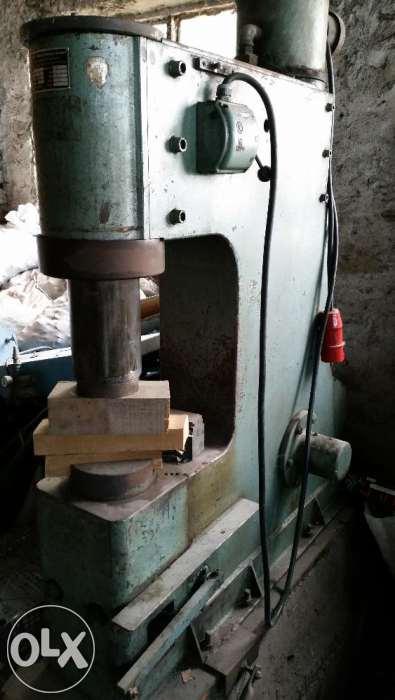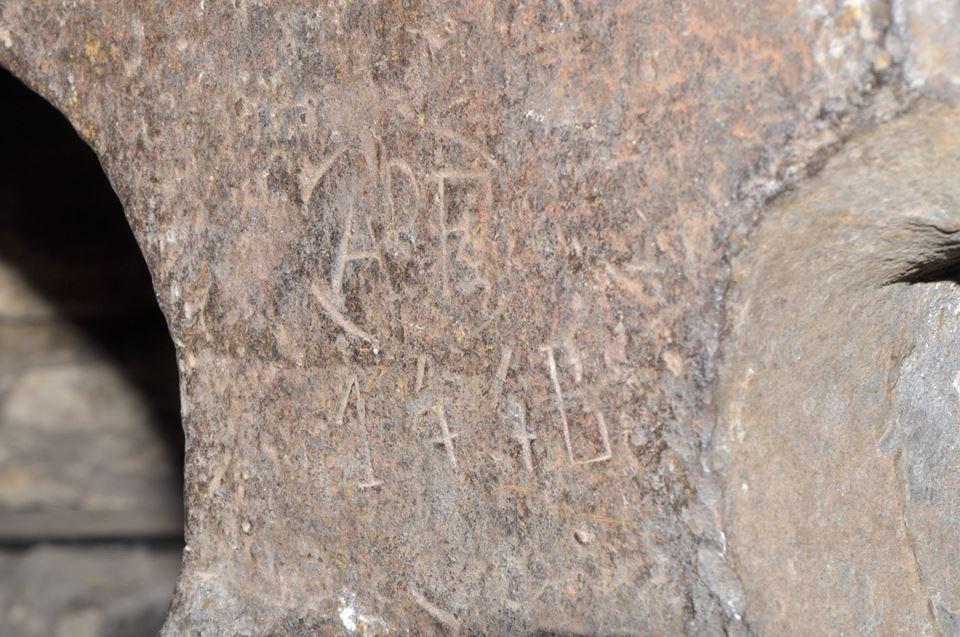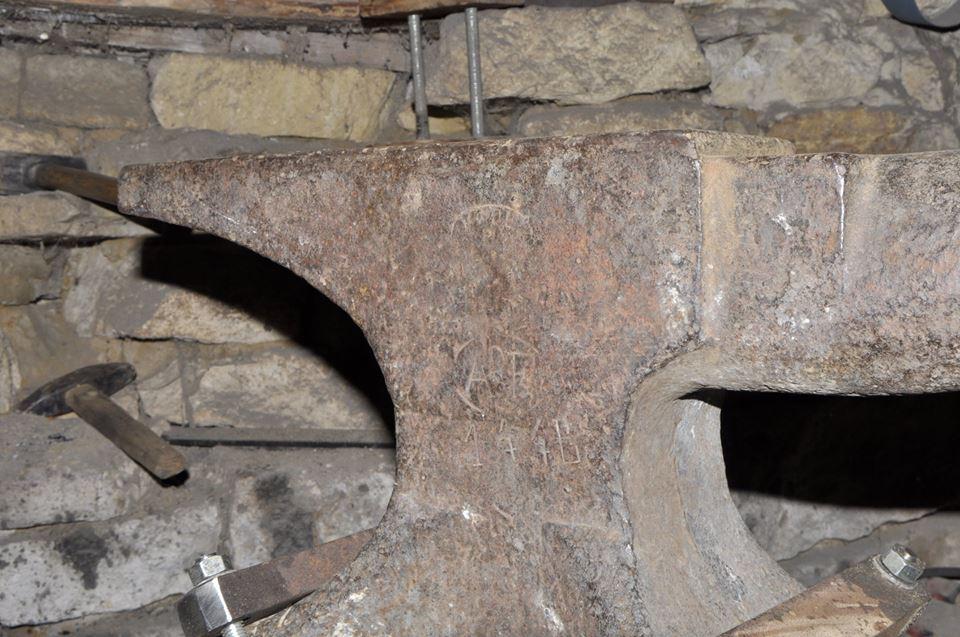
matei campan
Members-
Posts
405 -
Joined
-
Last visited
Content Type
Profiles
Forums
Articles
Gallery
Downloads
Events
Everything posted by matei campan
-
246 lb Austrian Anvil
matei campan replied to Anthony San Miguel's topic in Anvils, Swage Blocks, and Mandrels
@ Anthony San Miguel - about that huge anvil - about 10 years ago when I first saw it, I was crazy about that anvil, I was dreaming it day and night, but didn't have the money. at the time I had just only one little JEB anvil (classic austrian one). now, after growing addicted to the double horned anvils, that anvil has more a "have to have that" appeal to me than working potential. for the money they are asking I could buy an absolutely gorgeous French double horn anvil of a close weight, including shipping cost for 2000+km distance. for example I bought one for 150 euros, ~150kg, forged, "pig feet" pattern, good condition with a very nice squared oak stump. it has a "museum look" even that's a user. shipping was free (a friend brought it for me). anyway, the one you won has more appeal to me than the one you missed, and they are more rare even in EU, as I have seen. it looks like a sculpture. that one you missed is most common and and a bit boring to me . for US may look exotic as the London pattern looks around here. so congratulations and enjoy yourself using it! -
246 lb Austrian Anvil
matei campan replied to Anthony San Miguel's topic in Anvils, Swage Blocks, and Mandrels
JEB also made other different pattern anvils, I think your's rather a German pattern than Austrian (Styrian?). I also saw several southern-german pattern ones. so I don't think yours is forcefully older, just another pattern in their range. here's another JEB anvil, a monster of about 350kg (?) that I know from a long time that's for sale. when I wanted to buy it, they asked a price that I didn't afford and meanwhile I changed my tastes - I prefer double horned anvils -
all I can say is that I know there are many IFI members who would kill for an anvil like that and in that condition.it looks that there you have an Italian pattern anvil (more versatile than the London pattern, IMHO) the only comment I have is that your "stump", as it's made by apparently soft wood stacked with the grain horizontally, it would be a bit "spongy" and will absorb a lot of the hammer's energy.
-
Yesterday I was too impatient to wait until someone could help me to lift a +300lb anvil on a stump, so I scratched my head a little to find a way to do it with what was available around me at the moment. several Ideas came to me, but I dropped them - too complicated. then, a little spark... I just took a plank long/wide/thick enough that was found in the workshop and laid an end on the edge of the stump to form a ramp. after that I just "walked" the anvil up on the ramp till I got it on the stump. I took me less than 2 minutes and it was quiet easy (my back is still thankful) It wasn't a glorious feat, but this may be useful for someone in that situation.
-
around here, eastern and central Eurpe, this is the standard anvil. even that the faces are hard, more than 90% of them are dished like yours. my first anvil is a 32kg JEB. it has 95%+ rebound (i catch the ball back without moving the hand).
-
here are some hinges made for some window blinds (?): and another pattern:
-
tank you all. the textured finish it's not my merit, it just came by itself
-
SAD, SAD powerhammer history
matei campan replied to matei campan's topic in Power Hammers, Treadle Hammers, Olivers
no, it was in another town ~300km away, where are several scrapyards, I suppose. and it was scrapped more than two months ago, small chances to find something. Once I saw a hammer just in the moment when it was charged on the truck to be scrapped, a hammer in great condition, it was a hammer belonging to a tech univesity, a hammer used just for demonstrations working like a clock, "out of the box" look. unfortunately too big for me - 150kg ram weight. once I bought a 100kg ram hammer for less than scrap price, great condition too, from a mill's maintenance shop - I had the anvil stolen (!) and my ex associate scrapped the rest of it. but, fortunately, I bought another one, a 63kg ram, for the scrap price. almost Identical story as the first sad one - I knew that hammer for more than ten years, never installed, then the guy asking 1500 euros for it, then, eventually, offering me for the scrap price to get rid of it... now it's the hardest part - figuring how to install it... -
I'm in a mourning mood and a "want to hit something" mood at the same time. 3-4 years ago I saw two Kuhn hammers for sale on internet, here, in Romania (unique event). the prices were +5000euros the piece. not long time ago I saw one of them advertised for 2500euros negotiable. so I thought to phone to the seller just for the conversation (but who knows...) and asking about the hammer and he told me that he gave it two months ago... to the scrap yard. he told me that were several people interested, but he didn't succeed to sell it, and eventually he had to clear the space... the hammer was in just "plug and play" condition... at least I saved the photo of it
-
unfortunately, usually I'm too lazy to make WIP pictures, sometimes that should be useful for me, too, because I forget the exact process and I have to rediscover how to optimize it again. the prototype was forged from 14/14 mm square bar, which was overkill for the serial work. and no welding. for the serie I laser cut some very raw blank out of 10mm sheet, essentially a circle and an angled tail, something like a musical note, and still quiet far from the final shape which involved a lot of forging. still no welding.
-
here is the third pattern of door handles I made for a customer who also ordered the other two previously posted here:
-
hello! here's a chef knife I made. it's forged from 20mm diameter 115CrV3 (silver steel), has a blade just a bit over 20cm (8inch). the handle is brushed wenge (unfortunately, the photos aren't good enough to see the texture well)
-
I have in plan some texturing, too
-
I really appreciate your appreciations here is the "father" of this knife, I posted it already on IFI some time ago, enough to be forgotten. I'm not sure if it still exists on IFI. it's the same design solution, but more "art-nouveau-ish" - http://s908.photobucket.com/user/matei-campan/library/blacksmith?sort=3&page=1 the more difficult part is the transition from the blade's plane to the handle's plane - the "T" section. the rest is question of patience (I started from 20mm diameter stock). I only HTed the blade, but the handle is very strong. and I brazed the handle's end to the "heel" of the blade. could not be stronger. that was my idea too, to improve the ergonomics of the grip, the comfort, and the aesthetics followed.
-
here is an interpretation of the usual "blacksmith knife", something more 3D and confortable. steel is 115CrV3 ("German silversteel")
-
I don't have time because I'm so slow and I'm spending too much time on every item. also because I don't choose the easiest way (not good for the wallet), but the way to satisfy myself too, as process and result.
-
thank you guys for the appreciations! they are made on order, I would like to have time to just make things
-
hello all here are some other door handles I made. they are forged from 14/14mm square.
-
that s Austrian pattern anvil is the most common pattern in central and eastern Europe, maybe 90% of the anvils, like the London pattern in the US, that's "the anvil" in the people's mind. and theJEBs tend to dish more than other anvils, maybe from it's construction or from the kind of use and abuse they suffered, that's a very common issue on them. the perfect flat ones are very rare. that doesn't mean the faces are not hard and the rebound poor. it's interesting that the communist era copies you can find here, even that the faces are softer, they don't tend to dish, but to rather "mushroom".
-
New Anvil Acquisitions!
matei campan replied to sparkymacker's topic in Anvils, Swage Blocks, and Mandrels
yes, that "pig" is ugly and far from the standard shape of an anvil, but it could be VERY useful - use it like the pyramidal horn from the double horned anvils. don't think ugly-beautiful, but think about the usefulness. -
Chain-makers anvil in use
matei campan replied to Black Frog's topic in Anvils, Swage Blocks, and Mandrels
it's also interesting to see that the sledges have different sizes to suit each ones possibilities... -
If not a question of money, I would go for the Gladiator. on the double horn anvils you have the variable width feature given by the pyramidal horn, a feature missing on the London pattern, on which you would need a narrower face from time to time, especially for ornamental working. on that Gladiator you have also the advantage of very wide face (Nimbas are in fact Italian pattern anvils). from the moment I've got a double horn anvil, I don't use the rectangular faced single horn anvils too often. anyway, the Centurion is big enough (surface, weight)
-
I was told that in the old times that a popular joke made to apprentices was to place cork pieces under the feet of the anvil, so the anvil will ring like hell. remove the neoprene, bolt the anvil to the stand tightly, put sand in the feet, etc. look in the forum for the "very quiet anvil stand".
-
just an example of a clearly cast (you can see the parting lines from casting) steel anvil with stamped markings, an anvil I found for a friend. from the looking it may be a Swedish one.
-
not always. me too I wanted to say that, that's a sign of a forged anvil, than I remembered some Swedish cast anvils that have the markings stamped into the surface...


